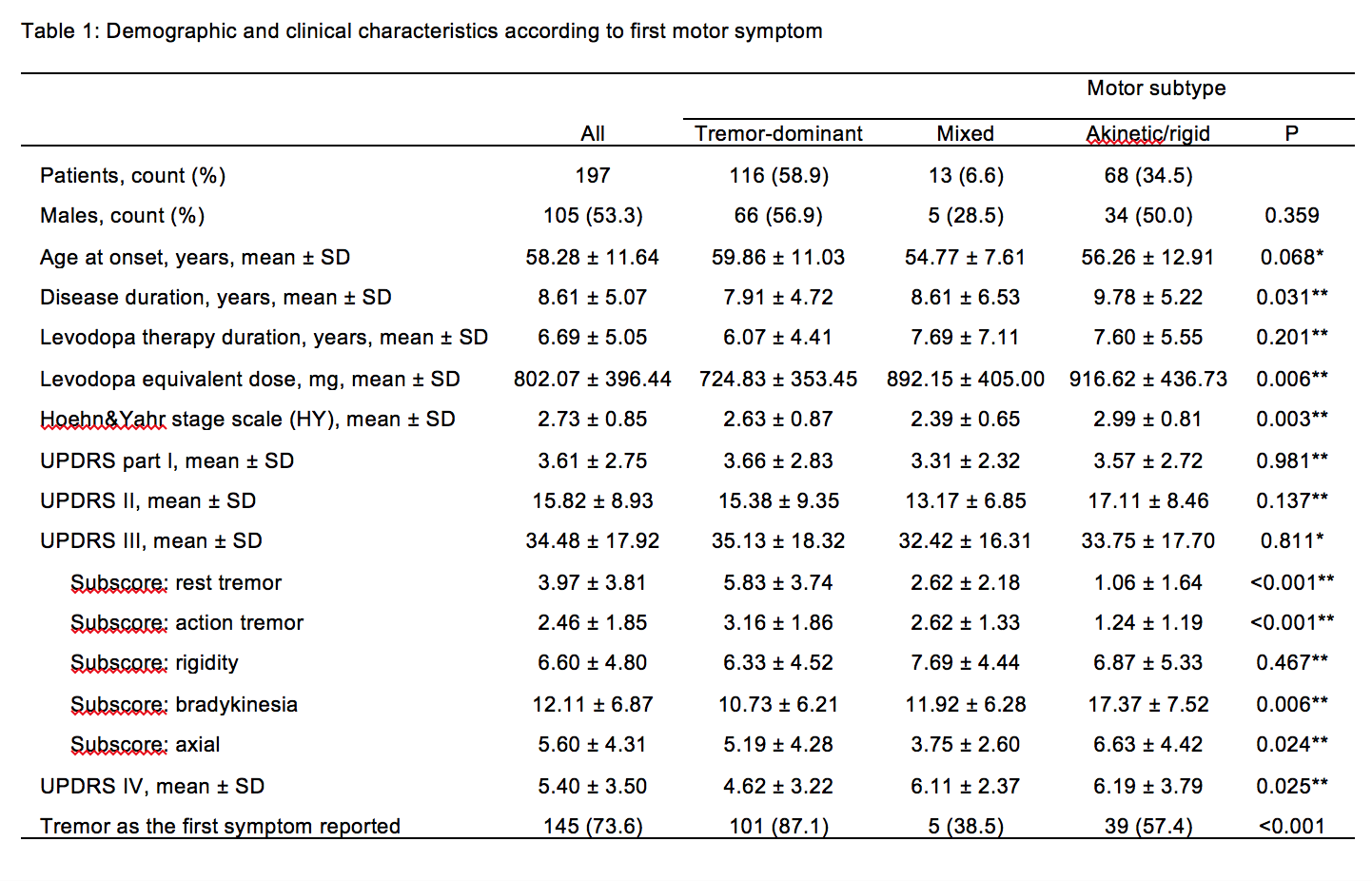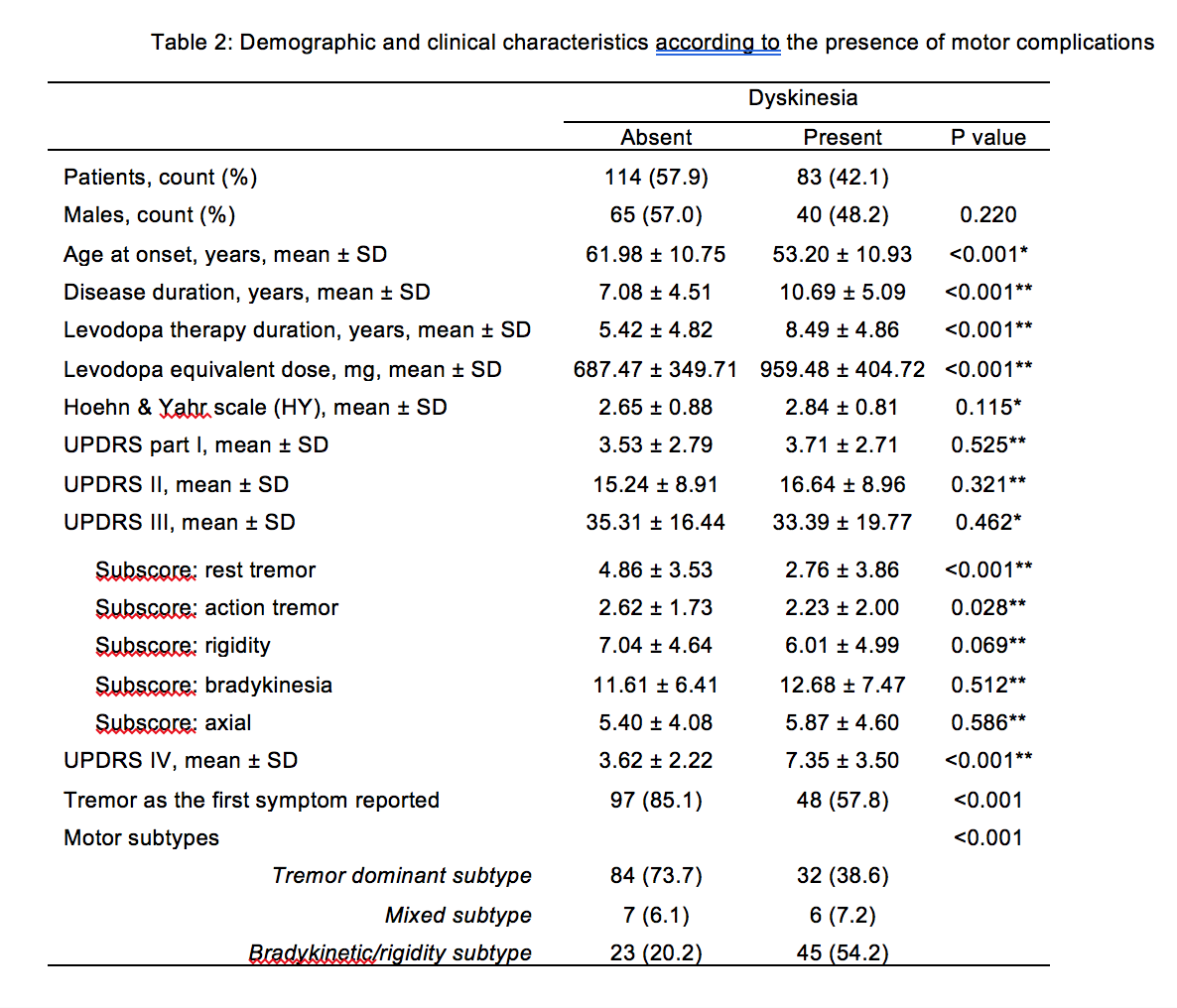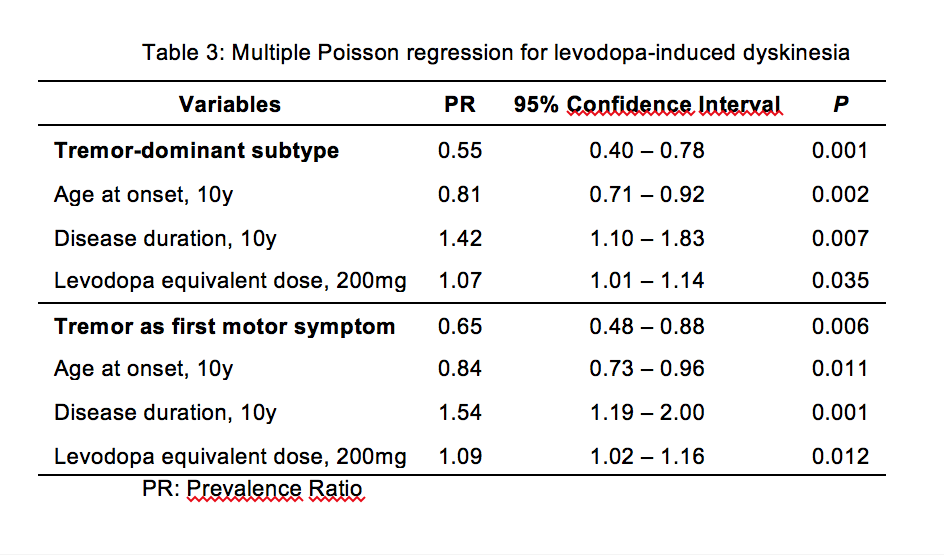Session Information
Date: Wednesday, June 7, 2017
Session Title: Phenomenology and Clinical Assessment Of Movement Disorders
Session Time: 1:15pm-2:45pm
Location: Exhibit Hall C
Objective: To better delineate risk profiles for the development of levodopa-induced dyskinesia is an important effort that can help understand this phenomenon and could impact clinical practice. In this cross-sectional study, our aim was to determine the association LED with motor subtype and first motor symptom reported by Parkinson’s disease patients.
Background: The long-term use of levodopa in Parkinson’s disease (PD) is associated with levodopa-induced dyskinesia in a proportion of patients. PD is increasingly recognized as a heterogenous disorder, with a variable presentation on clinical and pathophysiological features. The definition of its clinical subtypes is an ongoing venture that could lead to a better understanding of disease mechanisms and treatment options. The association of LED with different clinical subtypes of PD has been poorly investigated, but a protective effect of tremor as the primary manifestation was suggested on the development of dyskinesia.
Methods: A cross-sectional study with PD patients on chronic dopaminergic therapy was conducted. Patients were submitted to a structured interview and a trained physician applied UPDRS scale and Hoehn & Yahr Scale. Primary outcome measure was levodopa-induced dyskinesia, defined by Unified Parkinson Disease Rating Scale part IV. Motor subtypes were determined based on subscores of UPDRS motor examination (tremor-dominant, akinetic/rigid and mixed).
Results: A total of 197 patients were included. Multiple Poisson regression analysis showed that tremor-dominant subtype was associated with a lower prevalence of dyskinesia (PR = 0.55, 95% CI 0.40 – 0.78, P = 0.001). Additionally, tremor as the first motor symptom reported was either associated with tremor-dominant subtype and with dyskinesia.
Conclusions: The main finding described herein is that tremor as the first symptom reported by PD patients was associated with a lower prevalence of levodopa-induced dyskinesia and with tremor-dominant subtype. Our data corroborate previous studies and indicate that a simple historical information, like the first symptom reported by the patient, could predict the occurrence of dyskinesia and future motor subtype. This result could help to guide long-term strategies of treatment and better select patients for future clinical trials of drugs or surgical procedures.
References: Thenganatt MA, Jankovic J. Parkinson disease subtypes. JAMA Neurol. 2014 Apr;71(4):499-504.
Kipfer S, Stephan MA, Schüpbach WMM, et al. (2011) Resting tremor in Parkinson disease: a negative predictor of levodopa-induced dyskinesia. Arch Neurol 68:1037–1039.
To cite this abstract in AMA style:
A. Schumacher-Schuh, F. Drumond, J. Leal, M. Dotto, S. Machado, C. Rieder. Tremor as the first symptom reported by Parkinson’s disease patients is a predictor of future motor subtype and levodopa-induced dyskinesia. [abstract]. Mov Disord. 2017; 32 (suppl 2). https://www.mdsabstracts.org/abstract/tremor-as-the-first-symptom-reported-by-parkinsons-disease-patients-is-a-predictor-of-future-motor-subtype-and-levodopa-induced-dyskinesia/. Accessed December 25, 2025.« Back to 2017 International Congress
MDS Abstracts - https://www.mdsabstracts.org/abstract/tremor-as-the-first-symptom-reported-by-parkinsons-disease-patients-is-a-predictor-of-future-motor-subtype-and-levodopa-induced-dyskinesia/



